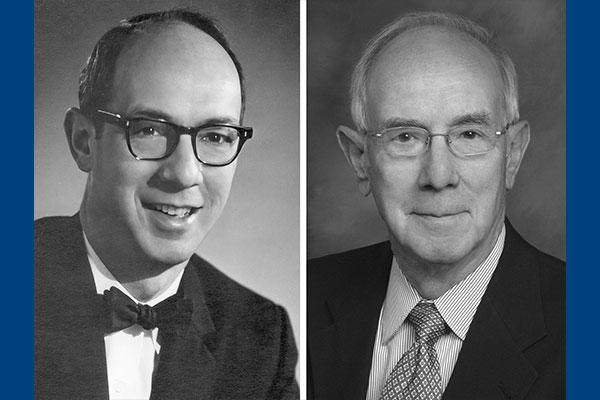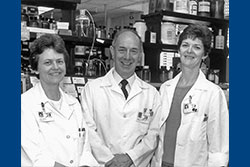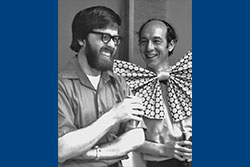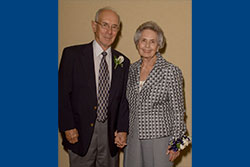A Pioneering Mentor: Robert Burgess Jennings

Robert Burgess Jennings, MD, a name synonymous with pioneering research and transformative leadership throughout Duke, retired in 2003, transitioning to his role as professor emeritus after a nearly six-decade career in cardiovascular research, 48 years of which he spent with Duke Pathology.

When Jennings first started as a trailblazer in the 1950s, it was to unravel the intricacies of ischemic myocardium and by making innovative contributions that have reshaped our understanding of cardiovascular health. In an era when the mysteries of ischemic myocardium were shrouded in uncertainty, Jennings dedicated himself to deciphering the molecular events behind the demise of heart muscle cells exposed to ischemia, or a lack of blood. His meticulous work revealed that the disruption of sarcolemma, the cell membrane of heart muscle cells, is a critical event triggering their death, shedding light on fundamental aspects of cardiac function.
Beyond the complexities of cellular processes, Jennings achieved a pivotal moment in cardiovascular research with the discovery of ischemic preconditioning in 1986. This groundbreaking phenomenon demonstrated that brief episodes of interrupted blood supply and subsequent restoration fortify the heart, granting it resilience against prolonged periods of reduced blood flow. His work not only advanced scientific understanding, but also became a cornerstone of cardiovascular health knowledge.
Outside of laboratory walls, Jennings' transformative leadership as Chair of Pathology at Duke University Medical Center, from 1975 to 1989, created a collaborative hub for innovative research. Duke evolved into a focal point for advancements, attracting brilliant minds influenced by Jennings's pioneering work.

In a 2008 celebration of his career, a list of prestigious awards, including the Gold-Headed Cane of the American Society for Investigative Pathology, underscored his remarkable achievements. However, Jennings, ever humble, emphasized the importance of collective work over personal recognition—a guiding principle that left a lasting mark on colleagues and students alike.
Professor and Senior Vice Chair David Howell, MD, PhD, was one of Jennings’ mentees.
“Despite his lofty achievements, Dr. Jennings is a quiet, unassuming man,” said Howell. “At the celebration of his career in 2008, we were presented with a list of his extraordinary collection of awards and honors. I remarked to him afterwards that many of these things had been won while he was mentoring me, but he had never mentioned them. He shrugged and said something like, ‘I guess I never thought it was that important.’ In addition to pathology, he taught kindness and humility by example.”

Jennings is not just a scientist; he is an architect of knowledge, a mentor, and an agent of change, whose influence reaches far beyond the pages of research journals.
“In addition to hiring me as a fledgling assistant professor during his tenure as chair, Dr. Jennings was one of my foundational teachers,” continued Howell. “Though his fame as an investigator was in the area of cardiac ischemia, he was also an accomplished renal pathologist. I learned much of what I know about diagnosing kidney disease sitting across the microscope from him. In 1994, he offered to nominate me for membership in the Renal Pathology Society (RPS): a new organization in which he was one of the early members. I will be president of the RPS in 2024 – a career capstone for which I owe him a major debt of gratitude,” remarked Howell.
Colleagues universally appreciate his unwavering commitment to scientific integrity, describing him as the "anti-hype" for prioritizing solidity over speed in an era of rushed research. His extensive career displays a remarkable focus on reperfusion injury and cardioprotection, demonstrating the hallmark of a great investigator—steadfastness amid evolving trends. Colleagues also praise his admirable human qualities, depicting him as a true gentleman, marked by total integrity and fairness and whose calm and composed demeanor prevails even in the face of stress.

“I worked with Dr. Jennings as a resident and as a faculty member,” said Professor in Pathology and Ophthalmology Alan D. Proia, MD, PhD. “He was always a delight to work with. He was kind, patient, and a good teacher. He shared my fascination with a kidney disorder termed ‘bile nephrosis (cholemic nephrosis)’ and had studied this while a student at Northwestern University.”
“I worked with him mostly doing medical kidney biopsies,” said Pathology Professor Rex Bentley, MD. “He was a very kind and patient teacher with someone who was just starting to learn about medical kidney diseases. I still remember him telling me that the first job was to find the tissue on the slide, LOL!”
As Duke bids farewell to such a luminary figure, the legacy of Jennings continues, including his seven guiding principles, which have become foundational tenets not only in his career but also in shaping the scientific journeys of those fortunate enough to be mentored by him:
-
Ask an important question related to what you wish to study.
-
Design experiments that provide logical directions for answering questions.
-
Maintain focus, avoiding unproductive diversions.
-
Strategically secure funding for continuous research.
-
Leverage institutional support and outside funds for sustainability.
-
Bet on significant changes, recognizing their impacts in biology.
-
Be lucky.